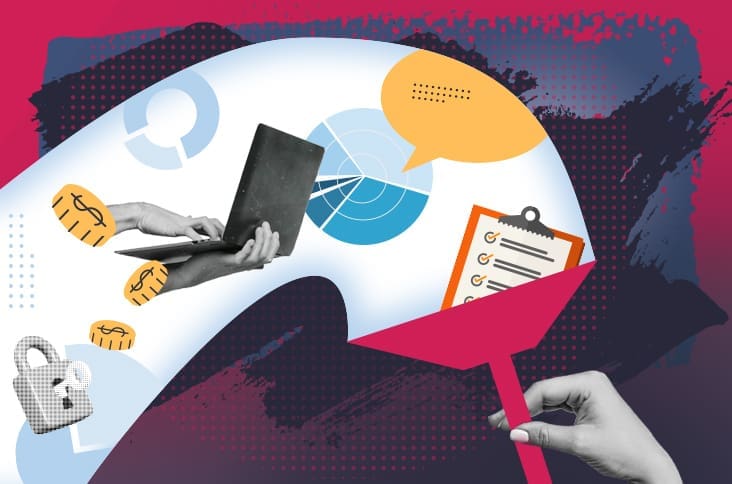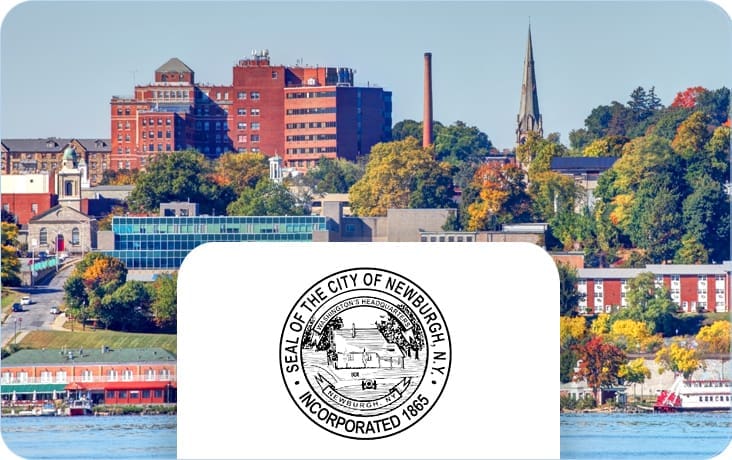
Blog
Digital Transformation in Government Procurement: Driving Agility in Uncertain Times
June 26, 2025
As efficiency mandates gain momentum across the United States, public sector procurement teams are being asked to deliver more strategic value despite limited resources. The demand for cost-saving, high-performing digital solutions is increasing as public agencies seek better efficiency, transparency, and risk management.
At this point, the question isn’t whether to modernize; it’s how fast government agencies can adopt digital procurement tools that deliver agility, automation, and long-term impact.
Challenges Facing Government Procurement Teams
Procurement professionals operate in a uniquely complex environment. Between budget constraints, aging systems, shifting policies, and evolving compliance requirements, government entities face pressure to deliver more with less while maintaining fairness and accountability. These teams must also navigate changing public expectations around responsible spending, equitable access, and environmental sustainability. As procurement plays a larger role in achieving broader government goals, the demand for transformation has never been higher. Public procurement must now serve as both a strategic function and a frontline responder to change. The growing need to ensure equity, drive sustainability, and improve supplier access has placed procurement leaders at the center of mission-critical decision-making.Limited Resources and Staffing Pressures
Workforce shortages are not new in government procurement. According to a 2022 NIGP report, 59% of procurement professionals hold specialized certifications, making these roles hard to replace and even harder to scale. Meanwhile, retirements and hiring freezes across the public sector are stretching already limited teams. Procurement departments often must focus on short-term firefighting over strategic planning, leaving long-term value on the table. This creates a performance gap that only automation and digital solutions can effectively and sustainably fill. Without intervention, these pressures can lead to burnout, increased turnover, and delays in key projects. By contrast, modern platforms support more innovative workload management and better business continuity.Outdated Systems and Manual Workflows
Only 35% of procurement teams report having a formal system for supplier performance management. This reflects a broader reliance on legacy systems that create manual workflows, siloed data, and slow procurement cycles. These outdated systems hinder visibility, increase compliance risk, and limit innovation. They also make it challenging to adopt new technologies such as AI, cloud solutions, and blockchain, which are transforming industries worldwide. The inability to integrate these new tools with legacy software poses a barrier to achieving procurement modernization. In addition, legacy systems often lack mobile access and accessibility features, which further limit usability and engagement across diverse users.Barriers to Supplier Participation
When procurement processes are manual, vendors face tight timelines, restrictive specs, and complex paperwork. Many suppliers opt out (especially small or local businesses) because the cost of participation outweighs the rewards. In effect, this stifles competition and innovation. By reforming vendor onboarding and streamlining contracts with e-procurement platforms, governments can foster more inclusive and accessible procurement practices, supporting supply chain management initiatives. Additionally, improving supplier outreach through social media, local partnerships, and automated alerts can further encourage participation and strengthen supplier diversity efforts. Reducing supplier burden also enables agencies to identify more responsive vendors, prevent procurement delays, and improve overall project delivery.How Digital Transformation in Government Empowers Procurement Teams
Government modernization isn’t just about upgrading software—it’s about transforming how public agencies operate, communicate, and serve their communities. Here’s how digital transformation in government empowers procurement teams.Streamline Operations Without Adding Headcount
Modern platforms like Bidnet Direct by SOVRA automate repetitive tasks such as bid tabulation, vendor outreach, and document management, freeing staff to focus on high-value strategy and compliance. Standardized workflows, document libraries, and integrated training reduce errors and onboarding time. These tools support business process optimization, allowing agencies to scale without expanding their headcount. Case in point: The City of Newburgh, NY, used Bidnet Direct by SOVRA to transform a one-person purchasing office. Bid preparation time dropped from hours to minutes, increasing responsiveness. Organizations also gain redundancy and resilience by embedding institutional knowledge into systems rather than relying solely on individual expertise.Improve Visibility and Informed Decision-Making
Digital procurement solutions consolidate contract data, supplier performance metrics, and spend history into a central dashboard, turning fragmented records into real-time insights. With embedded analytics, leaders can perform benchmarking, identify procurement bottlenecks, and align purchasing with strategic planning goals. Take a look at Hinds Community College who used SOVRA’s automated bid tabulation to eliminate spreadsheets and view vendor responses instantly. This improved both performance management and vendor communication. Dashboards enable procurement professionals to demonstrate their value to stakeholders and elected officials by visually representing savings, compliance rates, and supplier participation. Data-driven storytelling is becoming a core skill in the modern procurement toolbox. Improved access to reliable data also supports better forecasting, audit readiness, and cross-functional collaboration with finance, IT, and legal teams.Expand Supplier Networks and Boost Competition
E-procurement platforms like SOVRA enable broader vendor outreach while simplifying supplier registration and qualification. With self-service dashboards and customizable alerts, suppliers can update their credentials, track opportunities, and respond faster. These features support social media-style interfaces and product/service listings that make platforms easier to navigate. In practice, the City of Jacksonville, NC, expanded its vendor pool to over 5,000 suppliers using SOVRA’s North Carolina Purchasing Group, ensuring more competitive bidding and conscious spending. Greater vendor diversity also reduces reliance on single-source suppliers, improving resiliency and driving innovation. This shift supports broader policy reform goals around inclusive economic development and small business support. Accessible procurement processes foster trust in government, increase transparency, and reflect an agency’s commitment to community-wide benefit.Strengthen Compliance and Risk Management
Modern platforms enforce terms and conditions, approval rules, and document trails that improve audit readiness. With automated compliance features, agencies can adapt more easily to evolving procurement policies and legislation. In addition, cybersecurity features such as encryption, access control, and cloud-based data backups help protect sensitive procurement records. For example, Colorado’s Upper Thompson Sanitation District met FEMA compliance requirements post-flood by utilizing automated tracking tools, thereby unlocking critical disaster recovery funds. Built-in alerts and rule-based workflows make it easier to catch errors early, reduce fraud risks, and maintain high standards of ethical purchasing.Collaborate More Effectively Across Agencies
Digital tools allow for cross-agency collaboration, cooperative contracts, and shared libraries that break down silos and promote consistency. By leveraging shared templates and integration capabilities, teams reduce duplication, increase accuracy, and gain access to pre-qualified vendors and vetted documents. For example, the Town of Parker, CO, used SOVRA’s bid library to find piggyback opportunities and share procurement language, creating regional value across multiple departments. Collaborative procurement strategies can also reduce administrative burden, speed up timelines, and amplify the collective purchasing power of small agencies—a smart financial services strategy. This approach also builds a culture of knowledge sharing and continuous improvement among government professionals.What’s Next? Innovation, Technology, and Public Sector Reform
Governments across the United States are investing in procurement reform. Adopting tools that promote efficiency, transparency, and better outcomes for constituents. Key trends include:- AI and machine learning for demand forecasting and vendor scoring
- Blockchain for secure, traceable contracting
- Cloud-based integration across departments and systems
- Cybersecurity improvements for regulatory compliance and data protection
- Automation for project management, sourcing, and reporting
The Future of Procurement is Agile, Digital, and Strategic
Today’s procurement leaders are driving change. Not just for efficiency, but for resilience, equity, and impact. With the right tools, even small teams can act strategically, respond quickly, and create lasting value. Digital transformation in government helps agencies:- Expand supplier networks
- Improve compliance and risk management
- Empower data-driven decisions through analytics
- Streamline integration and collaboration
- Deliver on goals for transparency, cost-savings, and innovation
- Support broader public policy and economic resilience





